Education in the West has suffered from the influence of atheism.
The rise of atheism brought the death of absolute truth and morality in the West. Without an infinite and transcendent reference point, individuals became the center of the universe. Moral and metaphysical relativism form the framework for one’s life and work.
This relativism manifested itself in various ways. In the realm of education, it led to specialization as the norm. Knowledge was siloed and students learned “more and more about less and less.” This has led in turn to the fragmentation of life and societies.
Contrast this unhappy trajectory with the Puritan Technologia. This philosophy of education included not only the pursuit of Veritas but also posited an integrated and comprehensive understanding of knowledge, based on the reality of God’s transcendence (His existence outside the universe). This second part of Technologia is the concept of Encyclopedia – The Circle of Knowledge. In his Vision of Veritas, David Scott writes: “… technologia was the skill of harmonizing all of these resulting academic disciplines in a circle of knowledge, called “encyclopedia.”
The term “encyclopedia” was first used in the 1530s to mean “course of instruction.” Its literal definition is “training in a circle,” i.e. the “circle” of arts and sciences. It is derived from two Greek words—enkyklios “circular” and paideia “education, child-rearing.” This usage of Encyclopedia has been seen as the essentials of a “liberal education.”
William Ames (1576-1633), the Puritan theologian and educational reformer, wrote about the Technologia circle of knowledge: “The comprehension of all those arts by which things emanate from the Ens Primum [First Being] and return again to him is called Encyclopedia, whose first link of the circular chain is logic and the last theology.”
The circle is bound by creation, discovery, imitation, and glory. The framework begins with God, the Primary Creator. His creation is the primary Creation – reality.
Man, made imago Dei, has the ability to discover the Creator and the created order. He discovers through the three books: Scripture – revelation of Truth from God’s word, reason, and nature. From these human beings learn about God – the Primary Creator and the primary Creation.
Then man imitates what he has discovered. He manifests what he has learned about God and creation through his own imagination and creative activity. In this work, man functions as a co-creator with God building from the foundations and principles He has established. Man’s (secondary) creation? Culture. David Scott summarizes: “Through scholarship, humankind discovers God’s design and forms this knowledge into an imitation of God’s design in the disciplines of the arts and sciences.”
As the secondary creator, man reveals the Primary Creator and His Creation. As man creates culture, God is glorified and the earth is filled with the knowledge of God. This circle of creation, discovery, imitation, and glory is the circle of knowledge. (As we shall see, the Puritans were interested not only in knowing; they understood the invisible bond between knowing and doing. Their term for this correlation between knowing and doing was Eupraxia.)
In John’s Revelation (22:13) Christ states: “I am the Alpha and the Omega, the First and the Last, the Beginning and the End.” The Apostle Paul declares the supremacy of Christ in Colossians 1:16-18:
For in him all things were created: things in heaven and on earth, visible and invisible, whether thrones or powers or rulers or authorities; all things have been created through him and for him. He is before all things, and in him all things hold together.And he is the head of the body, the church; he is the beginning and the firstborn from among the dead, so that in everything he might have the supremacy.
Christ is the center and end of encyclopedia. He created the ontological origins of all things, and everything will consummate in the eschatological ends when Christ returns and the godly fruits of man’s secondary creation will glorify God.
Ames, the educational reformer, writes of the Six Arts that correspond to the circle of knowledge:
— Logic: The Art of Discoursing Well
— Grammar: The Art of Speaking and Writing Well
— Rhetoric: The Art of Speaking and Writing Ornately
— Math: The Art of Qualifying Well
— Physics: The Art of Analyzing Nature Well
— Theology: The Art of Living Well
In the Puritan vision for education, the Six Arts and the circle of knowledge were the foundation for all education and were purposed to prepare people for life and work. Vocation is not separated from theological reflection, but founded on it. God is on a mission and he has called us to join Him. Two mandates describe our mission: the Cultural Commission (Genesis 1:26-28) given at creation, and the Great Commission (Matt. 28:18-20) given at the time of Christ’s coronation. These provided a unified field of knowledge, the integrative principle for all education.
Technologia is a wholistic curriculum that related work to the context of worldview and first principles articulated in the scriptures. Its systematic, well-defined, and comprehensive framework helped each person glorify God, and enjoy him forever. It created the framework for each person to understand and pursue their own unique, God-given calling. Technologia became the moral and metaphysical “map in the mind.”
In a future post we will examine how the Puritans lived out the circle of knowledge in Eupraxia – The Practice of Right Living.
– Darrow Miller

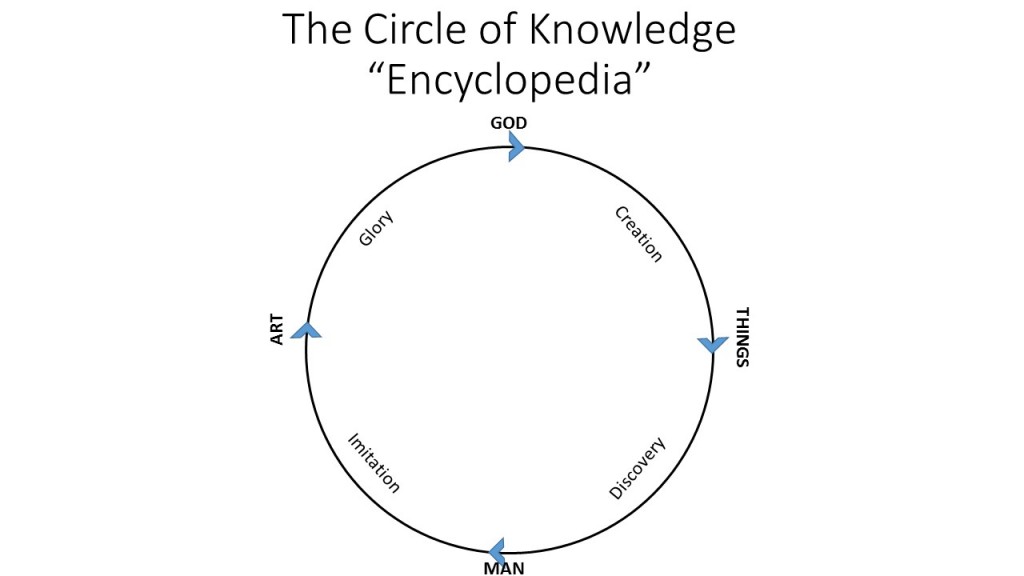
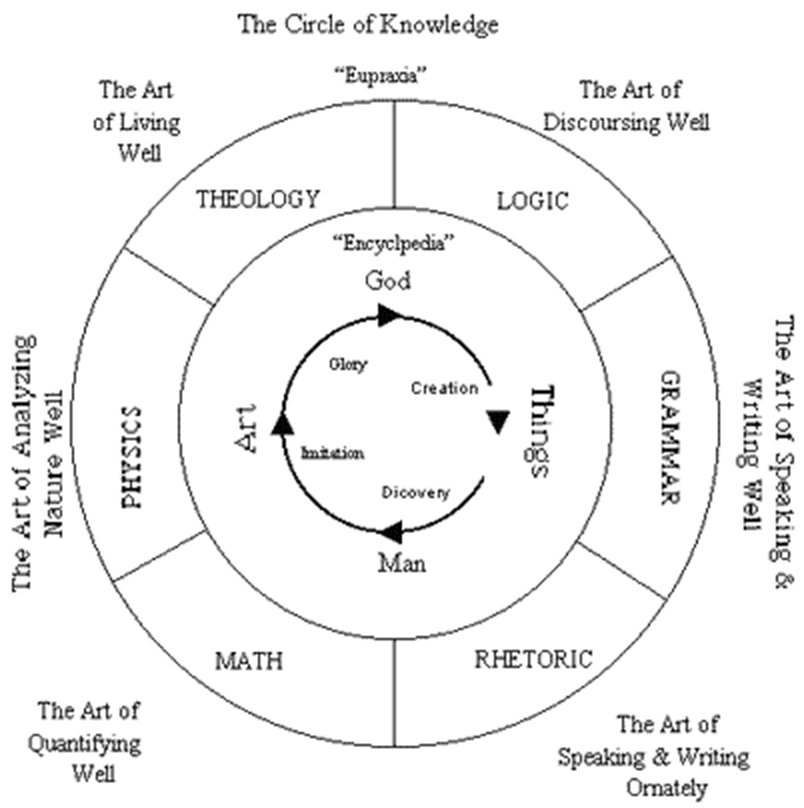


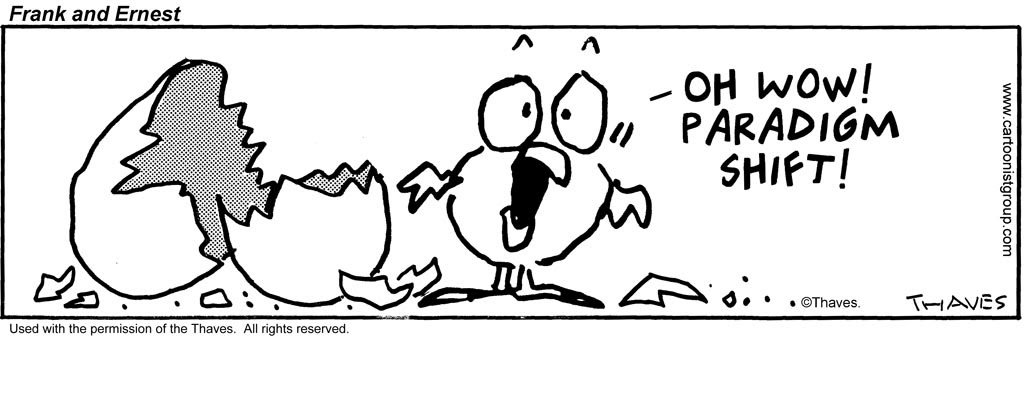
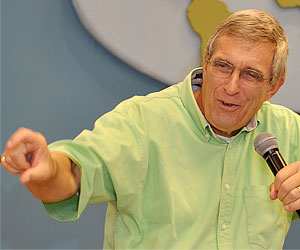
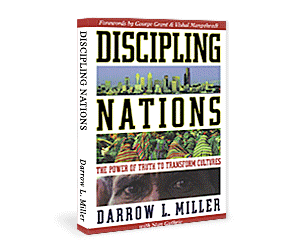
3 Comments
Jon Davis Jr.
July 13, 2012 - 6:03 pmI wish I could have had one of those Puritans as my teacher. 🙂